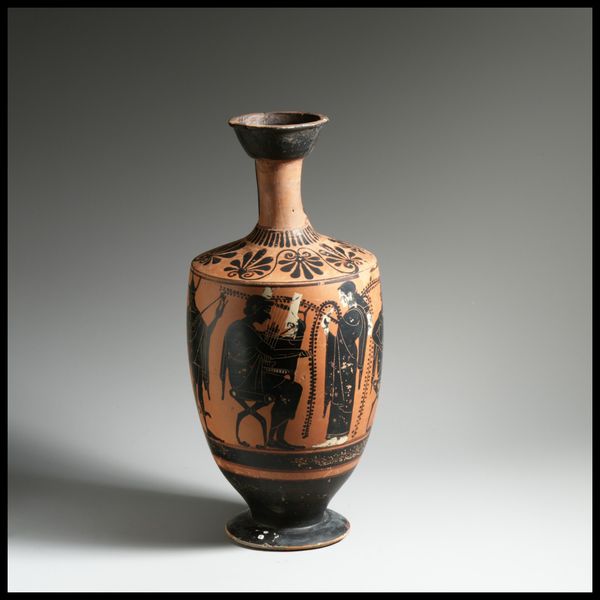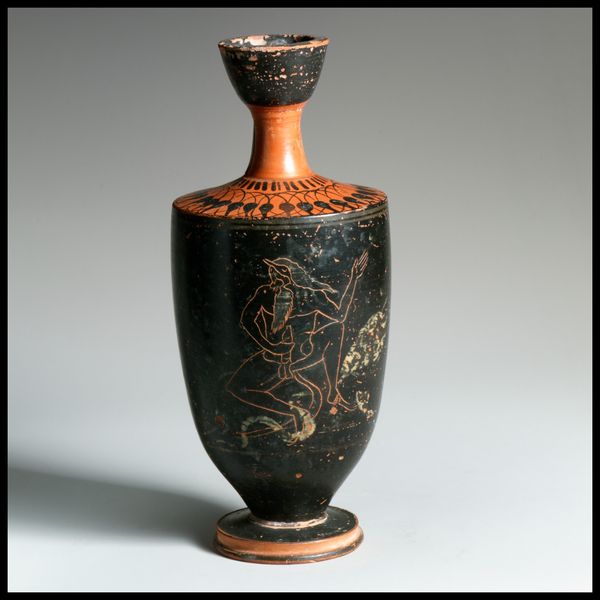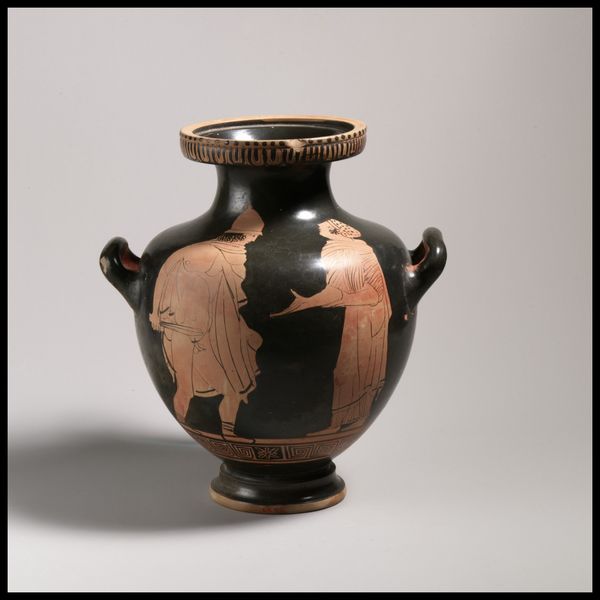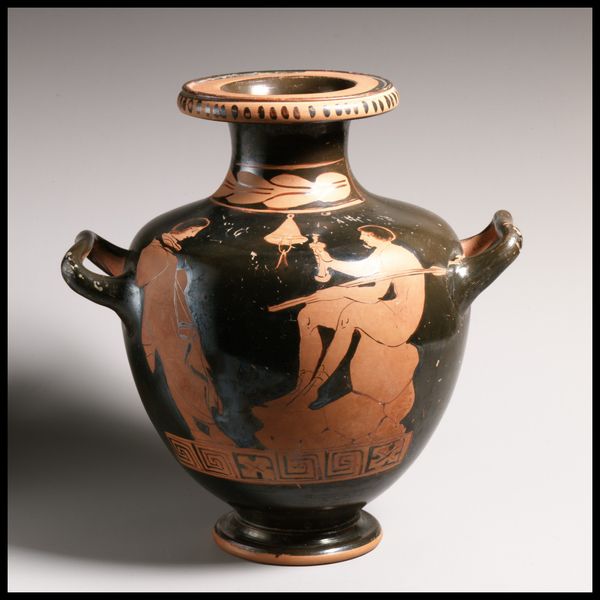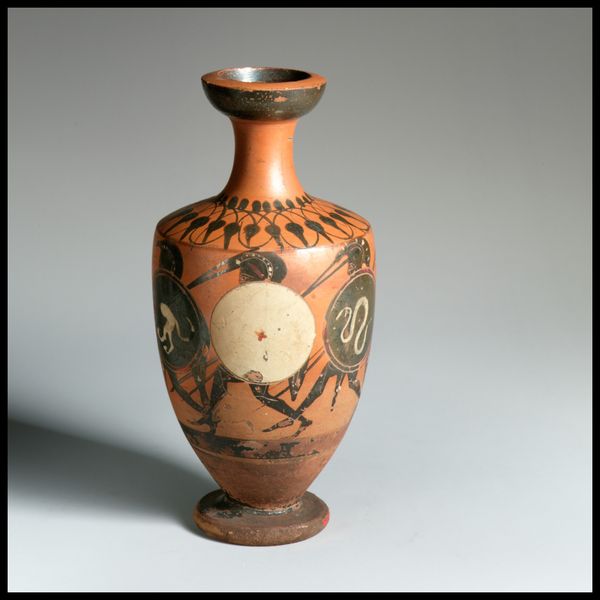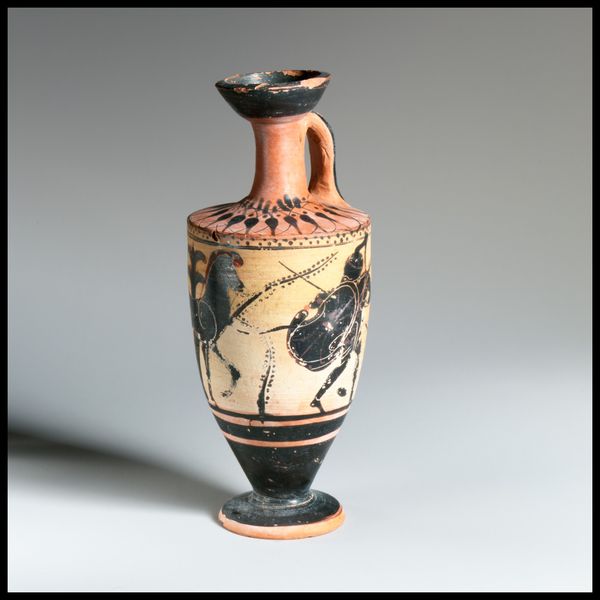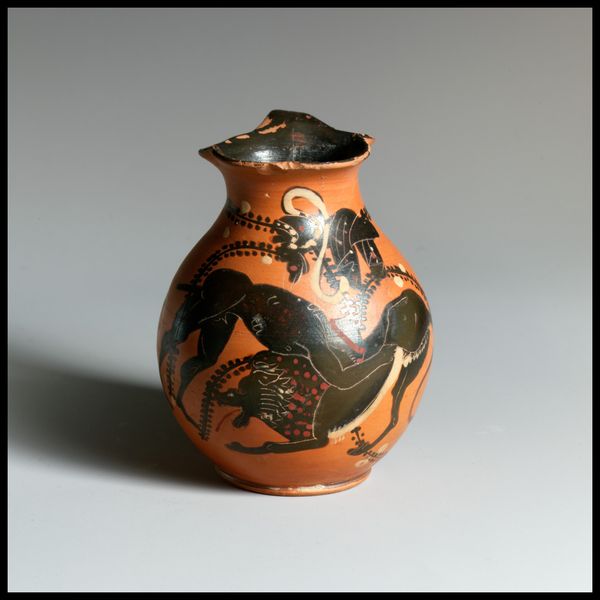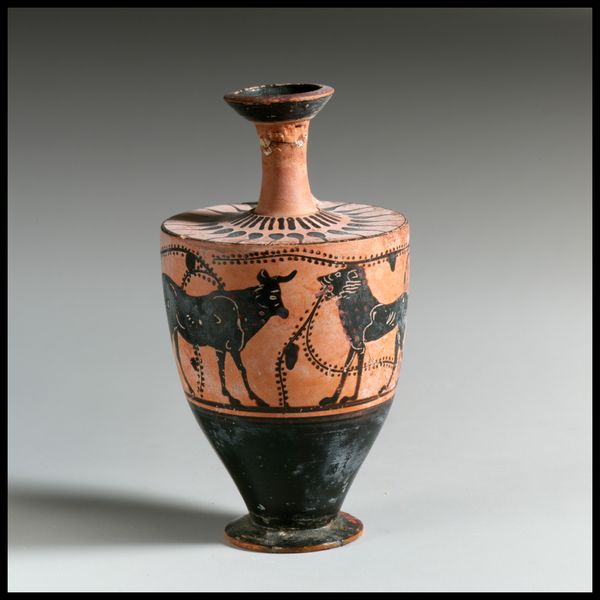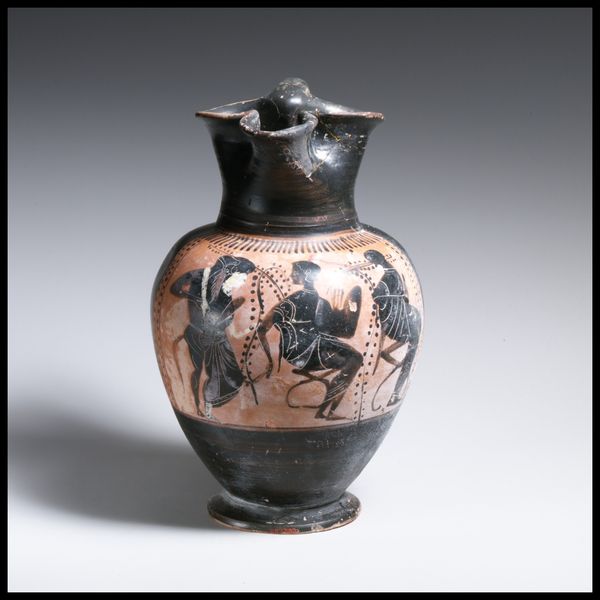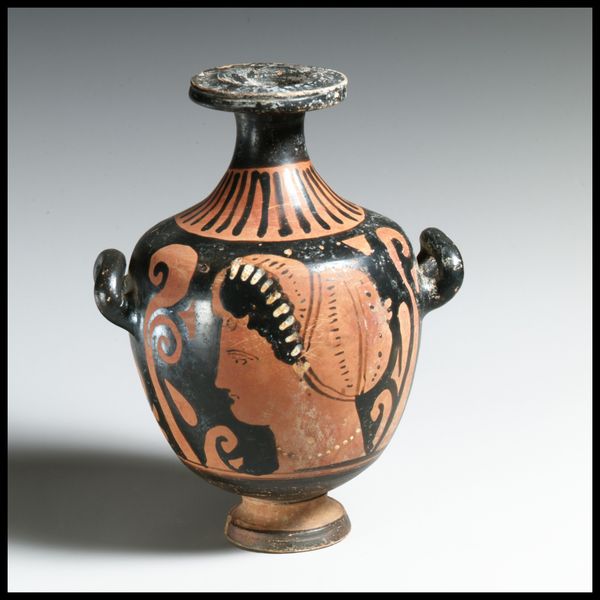
ceramic, sculpture
#
portrait
#
greek-and-roman-art
#
ceramic
#
vase
#
sculptural image
#
figuration
#
roman-art
#
ancient-mediterranean
#
sculpture
#
ceramic
#
genre-painting
#
nude
Dimensions: Overall: 9 7/8 in. (25.1 cm) Diameter: 5 1/2 × 3 × 3 13/16 in. (14 × 7.6 × 9.8 cm)
Copyright: Public Domain
Curator: Right now we're standing in front of a squat lekythos, made around 330 BC. Editor: Well, "squat" is right! It feels very grounded, earthy. Like something you'd find buried treasure in, even though it's a bit slender. And the figures—are they dancing? Curator: Lekythoi were often used to store oil, particularly for funerary rites, so maybe not exactly buried treasure! And you're right, the figures give it a real sense of movement. One is playing a tympanon. Editor: A tambourine! Okay, that checks out. It looks like a private, almost secretive ceremony, with just a couple of women involved. Do you think the patterns have any bearing on how private the celebration must be? Curator: Absolutely, look at the rosettes and wave patterns. They were fairly standard decorative motifs, but it is really more in how these women present themselves and go about their work. Also, a lekythos specifically signals the importance of honoring the dead. Editor: Yes, now that you point that out, it changes the read of the image quite a bit. The woman with the tambourine, the other holding the phiale, which looks as if she is perhaps pouring something to honor somebody's soul or memory—and their nakedness too is very moving. It suggests vulnerability. Curator: Exactly! And that connects, for me at least, with the idea that even mourning, while solemn, is another part of life, a very vital aspect. These ceramics humanize that life, make us recall rituals in our present existence. Editor: Beautiful. So, from an object meant for burial to something pulsing with life—maybe that's why it feels like buried treasure, in a way.
Comments
No comments
Be the first to comment and join the conversation on the ultimate creative platform.
